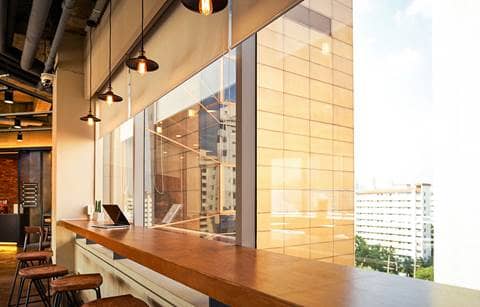Fund managers and their advisors have been structuring opportunity funds for more than two years without the benefit of final regulations. Now that the IRS and Treasury have released those final regulations, it’s time to assess the optimal opportunity fund structure for your goals.
What’s the difference between a direct and indirect investment?
A Qualified Opportunity Fund (QOF) is an entity that self-certifies that at least 90% of its assets are Qualified Opportunity Zone Property (QOZP). Qualified opportunity zone property consists either of direct investments in qualified opportunity zone business property (QOZBP) or indirect investments in qualified opportunity zone businesses (QOZBs) that own QOZBP.
It’s important to understand how the statute and new regulations treat these two structures differently. More on that shortly.
What is qualified opportunity zone business property?
Regardless of the chosen structure, every QOF is required to have an underlying investment in QOZBP, which is defined as tangible property used in a trade or business that satisfies the following three tests:
- Purchase test: The QOF acquired the property by purchase after Dec. 31, 2017, from an unrelated party.
- Original use test: Either the original use of the property must commence in the Qualified Opportunity Zone (QOZ) with the QOF or the property must be substantially improved by the QOF.
- Used in QOZ during holding period test: Substantially all (i.e. 70%) of the use of such property by the QOF must be in a QOZ during substantially all (i.e. 90%) of its holding period.
How much of the funds’ assets are required to be QOZBP?
Ninety percent of a QOF’s assets must be qualified opportunity zone property. Failure to maintain this 90% threshold results in semiannual penalties assessed at the QOF level.
In a direct investment structure, 90% of the QOF’s assets need to be QOZBP. If a fund uses the indirect structure, only 70% of the QOZB’s tangible property needs to meet the definition of QOZBP. It’s important to understand that the indirect structure not only has a lower bar from a percentage standpoint (70% vs. 90%) but also only tests the QOZB’s tangible property, whereas the direct structure tests the QOF’s total assets.
Let’s look at examples of assets that would be considered “bad” in a direct structure but not in an indirect structure: Reasonable working capital, trade receivables, prepaid expenses, intangible assets, capitalized lease commissions, and capitalized financing costs. An indirect investment structure allows more liberty in the composition of the business assets.
Be careful: Missing the 90% test leads to a penalty computed in relation to the shortfall, but missing the 70% test could mean that 100% of the QOF’s assets are not qualified. This subjects the entity to the maximum penalty.
The final regulations note that a QOF can cure a violation of the 70% test, but it only has six months to do so, and it can only utilize the cure provision once. Any subsequent violation of the 70% test could effectively permanently disqualify the QOZB.
How much time is allowed to deploy capital?
The QOF 90% asset test is measured every six months, but a special rule applies to determine the QOF’s initial test date. Any cash that a QOF holds on a test date is not eligible as a 90% qualified asset. The regulations allow QOFs to ignore capital contributions received within six months of a testing date if certain conditions are met, but that is the only leeway provided to QOFs in deploying capital.
On the contrary, the regulations introduce a working capital safe harbor for QOZBs that is not available to QOFs. When utilizing an indirect investment structure, a business can hold reasonable working capital in the form of cash, cash equivalents, and certain short-term debt instruments if they meet a number of requirements.
To use the working capital safe harbor, the QOZB must have a written plan documenting that these funds are held for development of a trade or business in a QOZ, including acquisition, construction, or substantial improvement of tangible property in such zone, as well as a written schedule of planned deployment of such funds within 31 months of receipt. A QOZB can utilize multiple integrated 31-month periods for a maximum 62-month period.
Additionally, the QOZB must reasonably comply with both the plan and schedule. This working capital safe harbor allows a QOZB a longer timeframe to deploy capital.
Unless a QOF intends to maintain minimal capital at all times by relying on debt financing and/or making capital calls when needed, a fund should strongly consider using an indirect investment structure to avail themselves of the working capital safe harbor.
The final regulations provide additional flexibility for assets in the process of being improved. If there is a reasonable expectation that used property will become QOZBP within 30 months, the property that is in the process of being rehabilitated will be a qualified asset during that timeframe. Unfortunately, it’s not entirely clear if such flexibility is available to QOZBs, since the regulations specify that such provision is applicable for purposes of the 90% investment standard, which is a QOF-level requirement. However, a similar provision is applicable to QOZBs that are using working capital to substantially improve an asset, but such provision is arguably only available to QOZBs that are utilizing the 31-month working capital safe harbor.
Are there any stipulations on production of business income?
When utilizing an indirect investment structure, a QOZB is required to derive at least 50% of its gross income from the active conduct of a trade or business within one or more opportunity zones. The regulations provide three safe harbors — as well as a facts-and-circumstances test — to assist QOZBs in documenting compliance with this requirement. A QOZB must satisfy one of the following three safe harbors:
- At least 50% of services performed based on hours worked by employees and independent contractors are performed in a QOZ.
- At least 50% of compensation paid to employees and independent contractors is related to services performed in a QOZ.
- Tangible property and management and operational functions needed to produce at least 50% of gross income are located in a QOZ.
Qualified opportunity zone businesses investing in real estate developments in a QOZ do not automatically satisfy the gross income test. Such a test could be problematic for landlords that lease property under triple net leases, since the final regulations confirm that a triple net lease in general does not constitute the active conduct of a trade or business. However, the final regulations clarify that, depending upon the facts and circumstances, rental property subject to triple net leases could constitute the active conduct of a trade or business. This means that QOZBs that derive a significant amount of their gross income from tenants under triple net leases should carefully review their situations to determine compliance with the gross income test.
Qualified opportunity zone businesses also are prohibited from conducting certain “sin” businesses, which are specifically defined as golf courses, country clubs, massage parlors, hot tub facilities, suntan facilities, racetracks or other facilities used for gambling, or any store whose principal business is the sale of alcoholic beverages for consumption off premises. The final regulations provide that de minimis amounts (i.e. less than 5%) of gross income or property involved in such activities will not cause a trade or business to fail to be a QOZB.
It’s important to note that these requirements are only applicable to QOZBs — they do not apply to businesses operated directly by a QOF. The preamble to the final regulations specifically clarifies that the prohibition on sin businesses is not applicable at the QOF level. But businesses operated directly by a QOF are still required to satisfy the Section 162 standard for a trade or business. As a result, QOFs operating rental real estate that derive a significant amount of their gross income from tenants under triple net leases should carefully review their situations to determine whether this activity satisfies the Section 162 trade or business requirement.
Are there differences in exit strategy between direct and indirect investments?
Prior to the release of the final regulations, many QOFs were set up as single-project funds to retain flexibility for a future exit. They also utilized an indirect structure to take advantage of the flexible capital deployment and asset ownership tests, despite the fact that the proposed regulations didn’t allow a QOZB to sell assets and qualify for gain exclusion after a 10-year investment period. The final regulations provide commenters with many of their wish-list requests related to flexibility in exit structuring, which generally improved the attractiveness of indirect investment structures and multi-asset funds.
The final regulations now offer an exclusion of all gains, other than those related to the sale of inventory by a QOZB or QOF, after a 10-year investment period in each of the following circumstances:
- Sale of property directly owned by a QOF.
- Sale of an interest in a partnership or stock in a corporation held by a QOF.
- Sale of property held by a QOZB in which the QOF invests.
- Sale of an interest in a QOF.
Unfortunately, the final regulations don’t provide any relief from tax on “interim” gains recognized by a QOF or QOZB prior to the 10-year investment period. However, some advanced tax planning strategies can help.
Are there any other requirements placed on an indirect investment into a QOZB?
The statute places additional limits on QOZBs that don’t apply to QOFs utilizing a direct investment structure. These limitations include requirements that a substantial portion (i.e. 40%) of a QOZB’s intangible property is used in the active conduct of business in a QOZ and less than 5% of the QOZB’s assets are nonqualified financial property (subject to the working capital safe harbor exception). While QOFs utilizing the direct-investment structure are not subject to these specific restrictions, intangible property and nonqualified financial property owned by a QOF are subject to the 90% asset test. As a result, a QOF’s ineligible assets including intangibles and nonqualified financial property cannot account for more than 10% of its assets.
The statute also includes a safe harbor for QOZBs that own tangible property that ceases to be QOZBP. In particular, such tangible property is treated as QOZBP for up to five years after it ceases to be QOZBP, as long as the property is still held by the QOZB and it had been used by the QOZB in a trade or business for at least two years after any working capital safe harbor periods. There is no comparable safe harbor for QOZBP owned directly by a QOF.
Which structure is best for my fund?
There isn’t a one-size-fits-all answer about which structure is better, and the optimal structure will depend on many considerations. That said, the three most important factors that influence the investment structure of a qualified opportunity fund (QOF) are:
1. Timing of capital calls: Will capital calls be front loaded or take place as capital is needed?
2. Timing of deployment of capital: How quickly will capital be deployed into qualified opportunity zone business property (QOZBP)?
3. Extent of non-QOZBP assets: What percentage of the QOFs assets will not be held in QOZBP?
Are you forming a QOF? Give us a call so we can help you determine the optimal structure based on your unique situation and needs.





